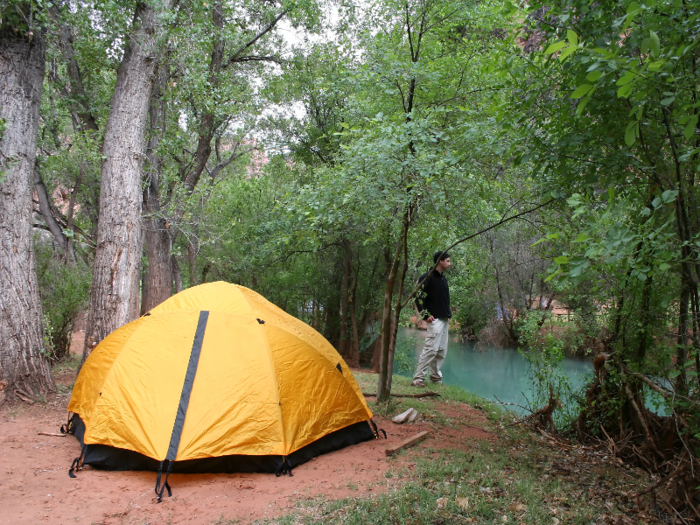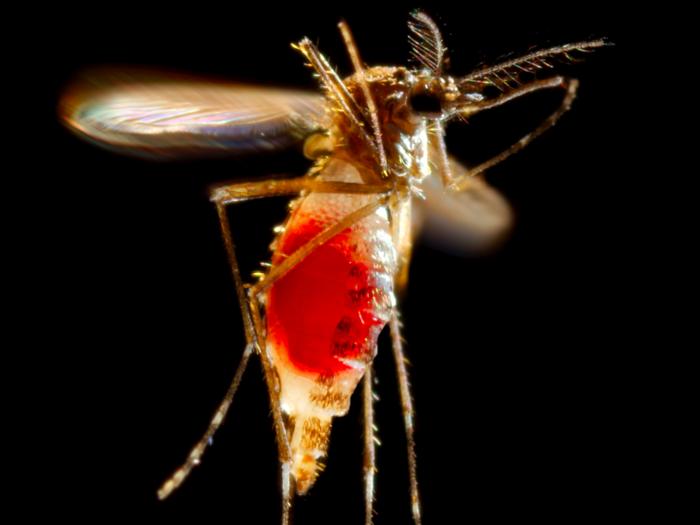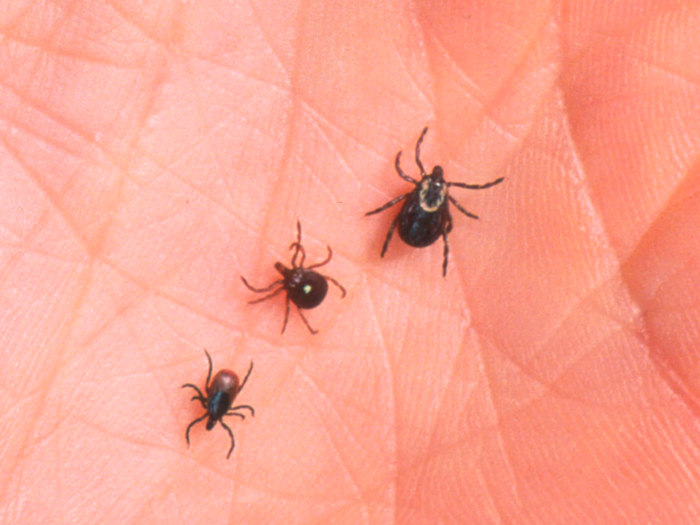- Home
- slideshows
- miscellaneous
- A step-by-step guide to avoiding ticks, mosquitoes, and other pests this summer
A step-by-step guide to avoiding ticks, mosquitoes, and other pests this summer
If you're traveling or moving abroad, know about the diseases you can catch at your destination.

Know where you're most likely to pick up ticks or other pests.

Pests that carry dangerous diseases aren't always found while traveling — many can be picked up in your own backyard.
Ticks (which are technically arachnids, not insects) are some of the biggest threats in the US. Diseases spread by ticks are rapidly on the rise, with the CDC estimating that there are 300,000 Lyme disease infections in the US each year— eight to 10 times what's reported.
Different types of ticks carry various diseases. Blacklegged or deer ticks can carry up to six pathogens; Lyme disease, which can cause joint and neurological problems, is the best known.
Lone Star ticks, meanwhile, can spread an allergy to red meat and mammal products. Other ticks carry other diseases as well.
You're most likely to pick up ticks while walking through tall grass, especially near wooded or brushy areas. Stay in the center of trails, cover up vulnerable areas with clothes as much as possible, and do a thorough tick check after any time outside.
Avoiding other pests requires different steps. Though cases of plague from fleas are rare, it's worth being wary of fleas near dead rodents in the southwest of the US.
Wear clothes that'll help protect your skin.

If you are going to be walking through the woods or in buggy regions anywhere, the easiest way to keep a mosquito or tick from reaching your skin is to make sure that skin isn't exposed in the first place.
Long pants, sleeves, and socks can help keep ticks from finding a patch of skin to bite.
Treat clothes and camping gear to keep unwanted visitors away.

If you want your clothes to help you battle bugs, look for outdoor gear that's been pre-treated with permethrin.
The chemical doesn't work on your skin, as it doesn't stay on there, but clothes or camping gear that have been treated with permethrin can deter bugs. Pre-treated clothes are good for around 70 wash cycles. Always wash permethrin-treated clothing separately, and check labels to see how long your treatment is good for.
You can also buy a permethrin wash or spray to apply to your own clothes, boots, or the outside of tents. These self-applied sprays don't tend to last as long as as the pre-treated materials, but can always be re-applied later.
There are a few locations, however — Puerto Rico is one — where mosquitoes have become resistant to the substance.
Use the right repellant on your skin.

On a hot day or at the beach, most of us aren't going to rely on long sleeves and pants to keep bug-free.
When it comes to choosing a repellant to put on your skin, select an EPA-registered product that's known to work.
The most common of these contain at least 20% DEET, which keeps both mosquitoes and ticks away. DEET is considered safe by the CDC. (That's even safe for children over two months of age and pregnant women, but there's no repellent for younger infants.) The American Academy of Pediatrics says not to use DEET concentrations higher than 30% on kids, and says they should wash their skin after returning inside.
Other products work for mosquito prevention too, though not always against ticks. Some of these products include Picaridin, IR3535, 2-undecanone, oil of lemon eucalyptus (OLE), and para-menthane-diol (PMD). Those last two should not be used on kids younger than three years old.
Always conduct a post-excursion tick check.

Ticks can be very hard to spot, and some of the worst ones are no larger than a poppy seed.
Do a careful check of your skin, clothes, gear, and pets after hanging out in any potentially tick-infested zone. You can do this in the shower, which has the added benefit of washing away unattached ticks. Use a mirror or partner to make sure to check everywhere, including under the arms, in and around the ears, inside the belly button, behind the back of the knees, in and around the hair, between the legs, and around the waist.
Make sure to conduct a careful check on kids as well.
Learn how to take a tick off the right way.

Ticks can take up to 24 hours to transmit Lyme Disease, so if you spot one, your priority should be remove it immediately. (Some scary diseases like Powassan virus can be transmitted much more quickly, though fortunately that particular condition is rare.)
Though you may have heard urban legends about using petroleum jelly or lighting a match to remove ticks, such methods are unnecessary — you can just pull the creatures off.
The CDC recommends using tweezers if possible. Grab the tick as close to the skin as you can and pull it steadily out, without twisting or jerking it, since you don't want parts to break off. If any parts of the tick remain in your skin, try to remove them with tweezers as well.
Don't crush the tick in your hands — drop it in alcohol, place it in a sealed bag, wrap it in tape, or flush it down the toilet.
Clean the affected area of skin with rubbing alcohol or soap after.
If you think you are sick, see a doctor.

Some of these diseases can become much more dangerous if left untreated.
If you have been around deer ticks, it's important to know the signs of Lyme disease. Common symptoms include fever, headache, fatigue, and a characteristic bulls-eye-shaped skin rash. If left untreated, the infection can spread to the joints, heart, and nervous system, causing more serious problems.
Zika often doesn't cause symptoms, so travelers who encounter the virus may be unaware of an infection. But when it does, patients often experience fever, rash, headache, joint and muscle pain, and red eyes. It can also cause Guillain-Barre syndrome, which can cause nerve damage and paralysis.
If you've traveled to an area where malaria is endemic, be on the lookout for chills, fever, sweats, headaches, aching, and nausea.
If you feel sick, it's worth making an appointment with a medical professional.
Popular Right Now
Popular Keywords
Advertisement